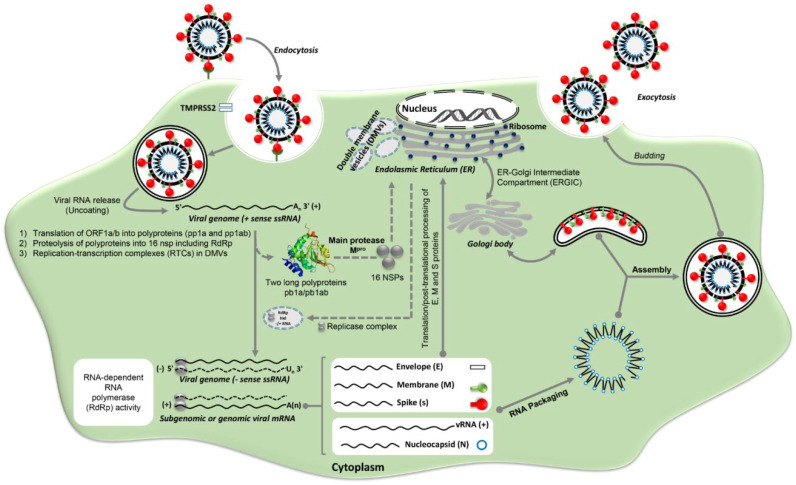Figure 1.
The schematic diagram illustrates the life cycle of coronavirus. The spike (S) protein of coronavirus commences infection “endocytosis” via recognizing the cellular ACE2 receptors and binding to it with its receptor-binding domain (RBD) in the S1 subunit. Following the viral genome (+ssRNA) into the host cell cytoplasm, two long polyproteins, namely pp1a and pp1ab, are translated from viral ORF1a and ORF1ab transcripts. The pp1a and pp1ab are further cleaved into 16 essential nonstructural proteins (NSPs). Necessary elements to the viral genome replication/transcription (e.g., nsp-7, nsp-8, and nsp-12) are congregated as RNA replication–transcription complexes (RTCs) inside ER-derived double-membrane vesicles (DMVs) to initiate the transcription/replication machinery for the internalized +ssRNA genome, leading to the generation of the genomic and subgenomic RNAs and their encoded viral proteins. Following the assembly of the posttranslated viral proteins and the nascent genomic RNA, the budding virion is then released from the infected host cell via exocytosis. Figure has been created by microsoft powerpoint.

